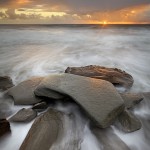Exposure Bracketing
Golden Hour Photography

When it comes to photography, timing can make all the difference. Trying to nail that shot with a perfect balance of warmth, colour, intensity and depth is no easy feat. The golden hour, which covers the hours ‘immediately after sunrise and before sunset, is considered the most accommodating time of the day. The reason being, these are the moments where the soft glow of the sun provides a delicate warmth contrasted with striking shadows. Something that just can’t be matched or recreated artificially. Let’s look closer at this special source of light. Soft Warmth and Dimension Because the sun’s light is diffused through more of the atmosphere when emerging or descending, the light offers a warm, golden appearance. There are hues of yellow, orange and red which strike over subjects leaving a gratifying sight. This is particularly the case when it lights up a person’s skin, offering a soft… | Read the full article
Exposure Bracketing

When I began taking photographs, there was no instant feedback from an LCD screen or histogram to tell me if I’d chosen wisely with my exposure settings. It was a matter of relying on the camera’s light meter (or an external light meter) and then crossing my fingers until the film was processed and I could view the printed result. Most of the time things turned out okay, but if I’d misjudged the situation, as is easy to do in tricky lighting conditions, there was no going back – a badly overexposed or underexposed image went straight into the bin. One of the safeguards against this was to bracket exposures. This simply meant taking several shots of a scene using different exposure settings in the hope that at least one of them would give a good result. This could be done manually or, with later film cameras, the camera could… | Read the full article
